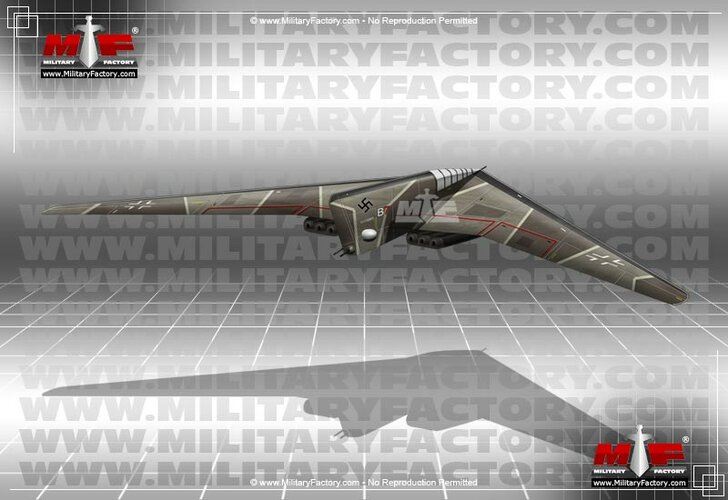The only reference I can think of to a bomber along the lines shown in the drawing comes from David Myhra's interviews with Reimar Horten during the 1980s. The transcripts of these interviews are really essential reading for anyone studying the jet bomber designs of January to April 1945. The following is from pages 295-296 of what Myhra labels Volume 3.
Myhra asks Horten 'when and why did the plans change to the Ho 18B from the Ho 18A?' The 'B' was the one with a fixed undercarriage (though the period drawing just calls it the 'Horten 18' without a 'B' or an 'A') and the 'A' is supposed to have been a design with the engines in the wings.
Horten responds by talking about the range possible with the different designs then says, 'The committee had come up with a committee-designed aircraft. It took the wing form from my designs but they [sic] committee was unwilling to make it completely all-wing. So they added a huge vertical rudder to it. To make this bomber it would require more working hours. In my plane with its straight tappered [sic] wing took very few hours or if the wing was rounded (which aerodynamically speaking) the rounded wing is better. So when I went back to Dessau I was already thinking about a better form (which I did not tell the people there at the committee) and which later on came to be the Ho 18B. Another reason why I had choose [sic] instead to produce the Ho 18B was that I was going to use the Heinkel-Hirth HeS 011 turbojets of 1,300kg instead of the Junkers Jumo 004's. Therefore I could eliminate two turbojets and now just by with four. I did not like the use of the vertical fin on the model suggested by the Dessau committee.
Myhra asks 'Why?'
'That vertical surfaces was not required on a large great plane bomber. It would produce drag and reduce the range of the bomber. I believed through my calculations that if we didn't have the vertical fin that that aircraft could fly up to 1,000km more in range.' He then goes on to explain how the Ho 18B was originally intended to land on skids but eventually the fixed undercarriage was decided upon.
So - a few things to unpack from that. First, this is evidence from the 1980s and isn't corroborated by period sources as far as we know. However, in Reimar's defence, he's actually pretty accurate in most of his recollections when compared against the contemporary documents. You ignore or disbelieve what he says at your peril. Secondly, we know that what he calls the Ho 18B was presented at the Langstreckenbomber conference in February 1945 and Junkers had been working on stats for the Horten design at least as early as Feb 22. The switch from the Ho 18A to 18B must have happened some time prior to that.
The so-called 'committee-designed aircraft' with its 'huge vertical rudder', according to Horten's timeline, must have been drawn up circa January to early February 1945. There are no known drawings of it but Horten says it existed. My guess would be that if it is genuine, the design we're talking about here is this 'committee bomber'.
Then again, it could be someone's attempt to imagine what the committee bomber might have looked like. Or it could be a complete fabrication. We cannot say for certain.
NB. Also worth bearing in mind that it would be H IX c or Horten IX c (if such a thing existed). The only aircraft ever referred to with 'Ho' was the 8-229. And even the Hortens themselves tended to refer to this as the 8-229 rather than Ho 229. Gotha occasionally called it the Go 229!



